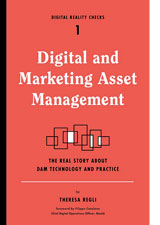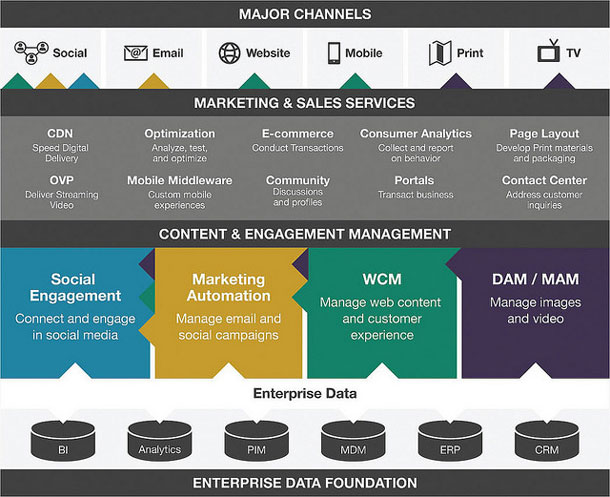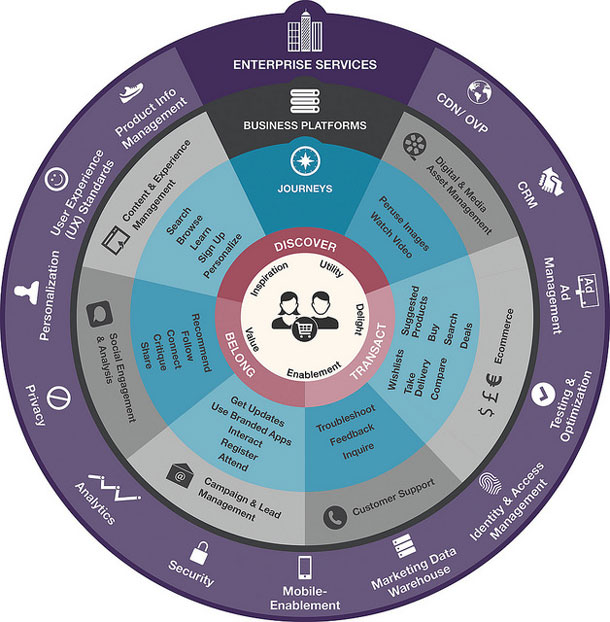[greybox]
 A review of
A review of
Digital and Marketing Asset Management
About this book
A good reference for Methods/How-To
Primary audience: Designers, Technical Roles who are new to the topic or have some experience with the topic
Writing style: Matter-of-fact, mostly text
Publisher: Rosenfeld Media, 2016, 211 pages, 11 chapters
Learn more about our review guidelines
[/greybox]
It’s often said that digital experiences suffer when users encounter content that is Redundant, Outdated, and Trivial (ROT). These ROTten assets can take the form of images, videos, and other media that live on the websites and mobile apps usability professionals work with every day. In some instances, content is also inconsistent. Perhaps your design team couldn’t track down an image used on a landing page, so you use a different image on the subpages, leaving users confused about whether the content they’re viewing is connected.
Oftentimes these issues stem from a lack of effective governance for content within the organization. In addition to having a governance plan for content, it’s helpful to have the right tools to help you store, manage, and collaborate on it. Theresa Regli’s Digital and Marketing Asset Management points to a potential solution in the form of Digital Asset Management (DAM) technology.
While the intended audience of the book is creative media and marketing professionals, usability professionals who work within marketing and digital marketing organizations will benefit from reading about the benefits of DAM to the broader organization.
For example, have you ever:
- struggled to coordinate with other groups in your company regarding sharing digital assets?
- been unable to determine when the licensing rights for an image expire or what they are?
- wanted an easy way to manage digital assets in multiple formats and easily reuse them across web, mobile, and other digital platforms?
If so, a DAM tool might be of interest to you. This book will help you learn more about such tools and, if needed, begin the process of finding one that’s a fit for your organization. Regli identifies 10 high-level functions of DAM tools:
- Ingest: Allow you to input and manipulate content
- Secure: Provide permissioning and access controls
- Store: Act as a repository for digital assets
- Transform: Enable creation of new forms of an asset such as making a thumbnail or a cropped version
- Enrich: Provide context for DAM use through metrics and metadata
- Relate: Include versioning and version control tools
- Process: Serve as a means to collaborate or align to workflows
- Find: Have capabilities for searching, organizing and discovering assets
- Preview: Viewing of assets
- Produce/Publish: Link to outside systems by publishing digital assets
She provides details on the variations available within each function across the DAM landscape. For example, tools may differ in their support of helping users find assets. Some may provide saved search, faceted search and/or advanced search. Tools also differ in their inclusion of the 10 functions mentioned above.
Regli also includes a DAM maturity model which provides an overview of the people, information, systems, and processes needed to implement DAM and build effective DAM practices. UXers will appreciate this holistic approach to assessing organizations for their readiness. Ultimately, we are people working with technology to solve problems for and connect with other people. Regli clearly understands this and advocates for a customer-focused approach.
Her listing of strategic considerations to keep in mind when selecting a tool is spot on. I’m sure we’ve all experienced working with a tool and its vendor that weren’t a great cultural fit or didn’t meet expectations when it came to service. She lays out things to look for in a way that will help you take a long-term view approach of not only the selection of the tool, but your relationship with the company that creates it.
Perhaps the most useful aspect of the book is its balance of big-picture organizational goals and the details of DAM. This book could just as easily be used as a guide for understanding DAM and building a request for proposal (RFP) as it could be for developing talking points for speaking with digital stakeholders and company leadership about the need for and value of DAM. Regli provides models that show how DAM complements other tools and processes likely found in your marketing organization to enable customer-centricity.
Although this book is geared toward a marketing practitioner audience, the guidance in this book will help user experience professionals working at the intersection of digital marketing, usability, and technology understand the DAM landscape and advocate for it within their organizations.
[bluebox]
DAM in a Digital Marketing Framework
The term “digital marketing technology” (or “MarTech” for short) has entered into common usage, although people often disagree on exactly what it means. Construed very broadly, digital marketing technology is the collection/cocktail of digital systems that marketers use to gather, cultivate, and nurture leads and customers. Traditionally, these systems reflected how a marketer wanted to represent a brand or product line. However, as marketing becomes (or aspires to become) more customer-centric, marketers increasingly sense that new approaches must focus much more intensely on customer preferences—including their browsing and buying history—and meet them in the channel of their choosing (mobile, in-store, catalog, or otherwise). Digital assets are instrumental for realizing this plan.
Top-performing organizations already recognize that a superior customer experience is intrinsically tied to the quality of their digital channels, and companies that sell tangible products effectively tie together in-store and digital shopping experiences. However, the quest for effectiveness in omni-channel marketing is hampered by a lack of practical frameworks to assess current states, conduct multi-stakeholder analysis, and help charter custom roadmaps for enterprise contexts.
In this regard, traditional IT-oriented architectural reference models can provide a layered inventory of digital marketing systems and provide a baseline for further analysis of functional (i.e., business), integration, and security/privacy needs.
However, a complementary approach to digital marketing as a strategy, practice, and technology examines the efficacy and usability of marketing systems from the perspective of the customer. A customer-centric reference model can more closely tie systems analysis to business value via the pursuit of brand awareness, customer engagement, and increased sales.

A traditional omni-channel marketing architecture reference model looks at systems in terms of layers—from the enterprise back-end forward to the frontline screen.
 A customer-centered model puts the consumer/customer experience at the center, and it outlines layers of capabilities required to engage prospects and customers, creating more value for them and your company.
A customer-centered model puts the consumer/customer experience at the center, and it outlines layers of capabilities required to engage prospects and customers, creating more value for them and your company.
[/bluebox]
